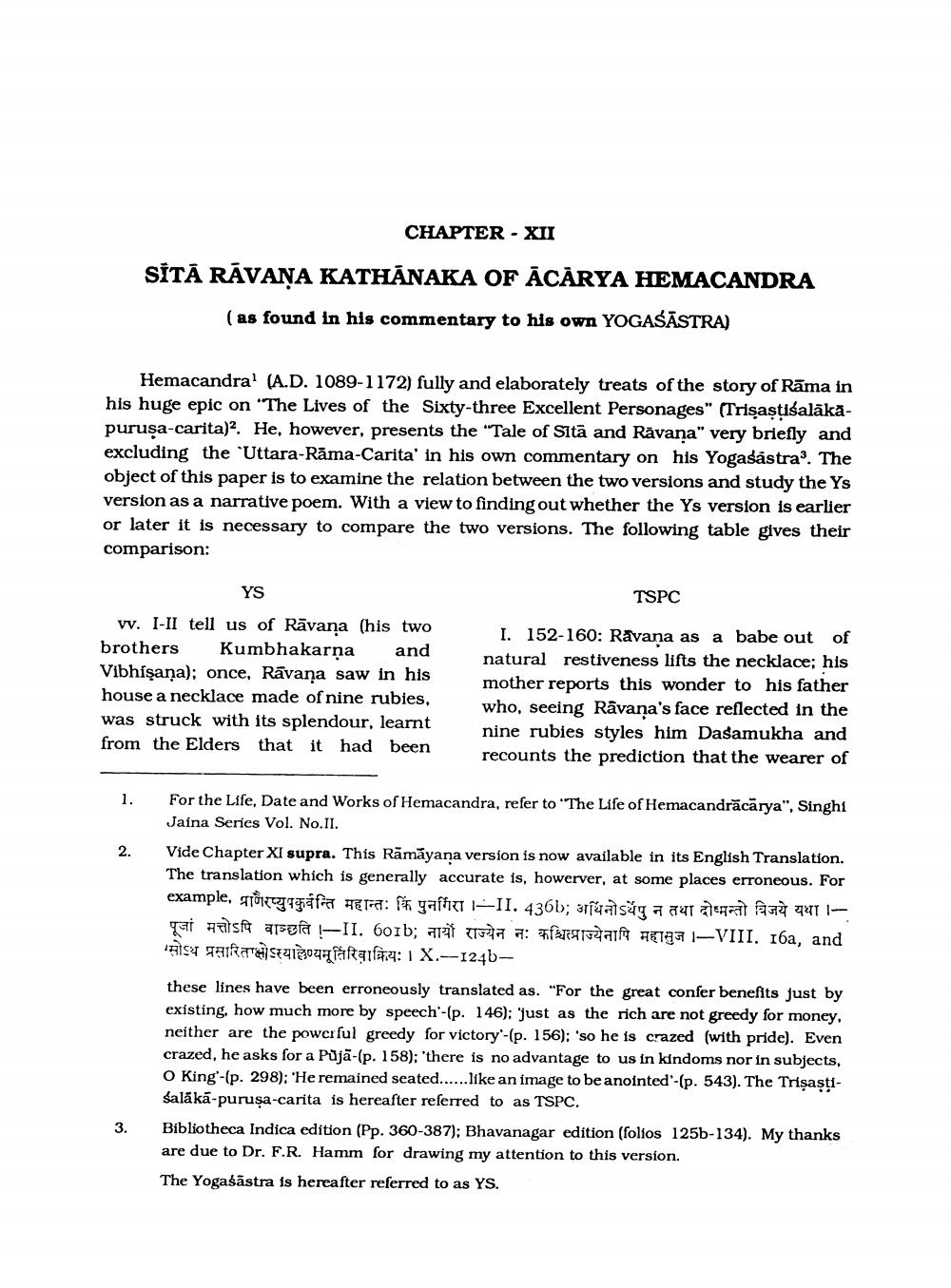________________
CHAPTER - XII
SÍTĀ RĀVANA KATHANAKA OF ĀCĀRYA HEMACANDRA
(as found in his commentary to his own YOGAŚĀSTRA)
Hemacandra' (A.D. 1089-1172) fully and elaborately treats of the story of Rāma in his huge epic on 'The Lives of the Sixty-three Excellent Personages" (Trisastiśalākāpurusa-carita). He, however, presents the "Tale of Sita and Rāvana" very briefly and excluding the 'Uttara-Rāma-Carita' in his own commentary on his Yogasastra. The object of this paper is to examine the relation between the two versions and study the Ys version as a narrative poem. With a view to finding out whether the Ys version is earlier or later it is necessary to compare the two versions. The following table gives their comparison:
YS
TSPC
w. I-II tell us of Rāvana (his two brothers Kumbhakarna and Vibhişana); once, Rāvana saw in his house a necklace made of nine rubies, was struck with its splendour, learnt from the Elders that it had been
I. 152-160: Ravana as a babe out of natural restiveness lifts the necklace; his mother reports this wonder to his father who, seeing Rāvana's face reflected in the nine rubies styles him Dasamukha and recounts the prediction that the wearer of
For the Life, Date and Works of Hemacandra, refer to "The Life of Hemacandrācārya", Singhi Jaina Series Vol. No.II. Vide Chapter XI supra. This Rāmāyana version is now available in its English Translation. The translation which is generally accurate is, howerver, at some places erroneous. For example, grocerrafa nera: Tk gafhet I-II. 4361; sfiatság a u nafanua Tai Haisa arsefa II. 601b; AR a a: P arafia 13 I-VIII. 16a, and se ga s taigozafataifa: 1 X.--124b
these lines have been erroneously translated as. "For the great confer benefits just by existing, how much more by speech -(p. 146): just as the rich are not greedy for money, neither are the powerful greedy for victory'-(p. 156): 'so he is crazed (with pride). Even crazed, he asks for a Pujā-(p. 158): 'there is no advantage to us in kindoms nor in subjects, O King-(p. 298): 'He remained seated......like an image to be anointed-(p. 543). The Trişastisalākā-puruşa-carita is hereafter referred to as TSPC. Bibliotheca Indica edition (Pp. 360-387); Bhavanagar edition (folios 125b-134). My thanks are due to Dr. F.R. Hamm for drawing my attention to this version. The Yogaśāstra is hereafter referred to as YS.




